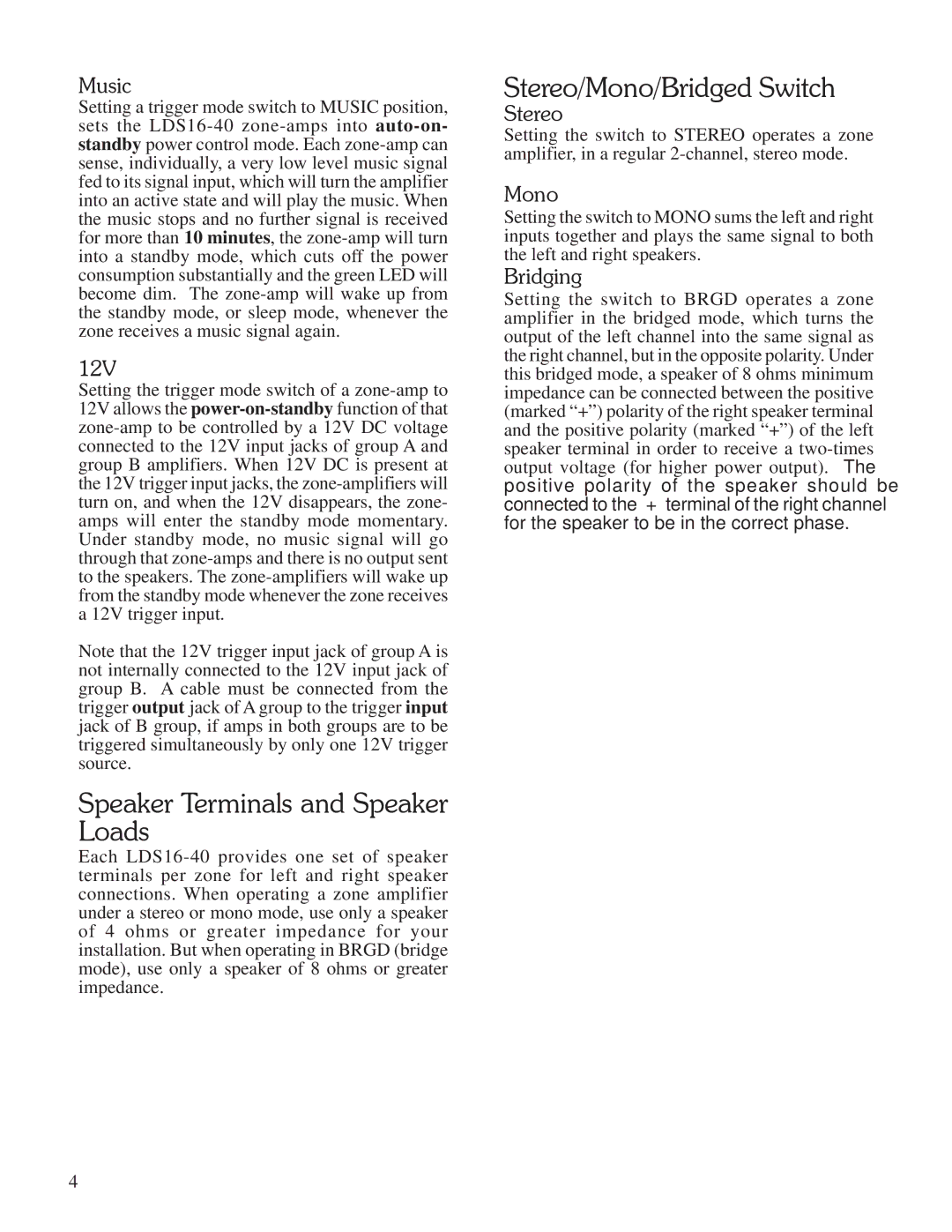LDS16-40 specifications
Sherbourn Technologies has earned a reputation in the audio industry for its premium home theater products, and the LDS16-40 is a standout example of their commitment to quality and performance. This powerful subwoofer is designed to deliver deep, robust bass that enhances the overall listening experience, making it a favorite among audiophiles and home theater enthusiasts alike.One of the main features of the LDS16-40 is its formidable power output. This subwoofer is equipped with a high-efficiency Class D amplifier that provides a remarkable 1000-watt RMS power rating, which ensures that it can deliver heart-thumping bass even in large rooms. This level of power is complemented by its robust 15-inch driver, which is designed to reproduce low frequencies effortlessly, creating a rich and immersive audio experience.
The LDS16-40 also benefits from advanced technology in its design. It features a unique enclosure that has been engineered to minimize distortion and resonance, which allows for a cleaner and more precise bass response. The high-performance driver is paired with an oversized magnet and a long excursion design, enabling it to handle dynamic audio signals with ease, ensuring that low-end frequencies remain powerful and accurate, even during the most demanding soundtracks.
Additionally, the subwoofer includes sophisticated room-correction technology. With its programmable DSP (Digital Signal Processing), users can optimize the subwoofer’s performance for their specific environment. This means that it can adapt to different room acoustics, providing tailored bass response that enhances both music and movie playback.
The LDS16-40 is also designed with user convenience in mind. It comes with multiple connectivity options, including RCA and XLR inputs, allowing it to be easily integrated into a variety of home theater systems. The intuitive control panel offers options for phase adjustment, low-pass filtering, and level control, enabling users to fine-tune their bass output to suit their preferences.
In summary, the Sherbourn Technologies LDS16-40 subwoofer is a powerful and technologically advanced audio solution, providing exceptional performance with its robust amplification, sophisticated DSP capabilities, and a well-engineered driver and enclosure. Whether you’re enjoying a cinematic experience or listening to your favorite music, the LDS16-40 promises to elevate your audio enjoyment to new heights. Its combination of performance, flexibility, and user-friendly features makes it a top choice for any serious audio setup.
